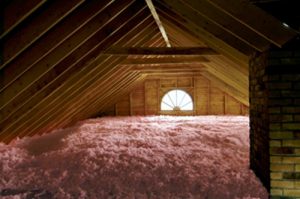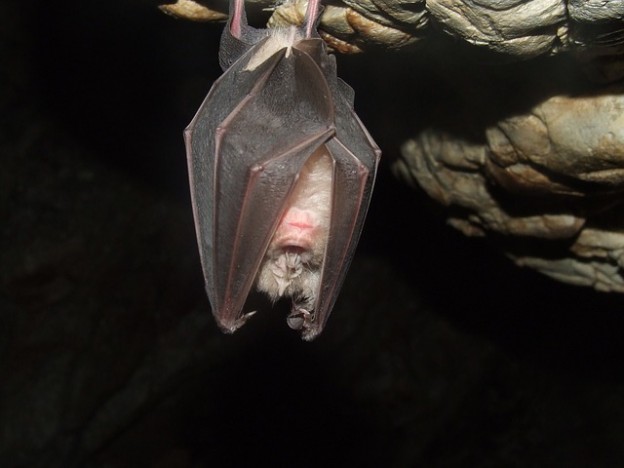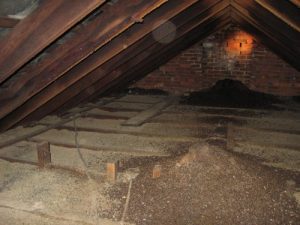Bats are great to have in the wild because they help control insect populations from getting out of control, but they are not so great to have in your home.
Bats in Illinois are well known to be carriers of rabies and are more likely than any other wild mammal to carry the disease. Less well known is that their feces (bat guano) can carry disease as well.
Bats living in your attic can cause problems and most concerning among them is disease carried in their guano.
Related: How to get bats out of the house
Histoplasmosis in Bat Feces
Histoplasmosis is an infectious disease which can be contracted by inhaling the spores of the histoplasmosis capsulation fungus.
The disease is not actually carried in the bat feces. Instead, it is a result of mold which grows on the bat guano.
Bats can create large piles of feces in your attic. Where a rodent such as a mouse will spread its feces throughout its range, bat feces will usually accumulate in a single area.
If you don’t notice the bats in your attic or home right away, piles of guano can accumulate. Over time it can begin to become the perfect environment for the histoplasmosis fungus.
How histoplasmosis is transmitted
Histoplasmosis infections are caused by breathing in the spores of a histoplasmosis capsulation fungus. This will happen if the spores become airborne, which is most likely to occur when you are trying to clean up the bat feces or another work project that disturbs the mess, causing the dried feces to break up and become airborne. This will result in an infection of the lungs.
Histoplasmosis is not contagious from person to person
Because it is a lung infection caused by inhaling the spores, an infected person cannot transmit the disease to another person.
Symptoms of histoplasmosis
 Possible symptoms include fever, dry cough, chest pain, joint pain, red bumps on your lower legs. In severe cases, symptoms may include: excessive sweating, shortness of breath, coughing up blood.
Possible symptoms include fever, dry cough, chest pain, joint pain, red bumps on your lower legs. In severe cases, symptoms may include: excessive sweating, shortness of breath, coughing up blood.
Most people who are infected with histoplasmosis will not actually contract any symptoms. It will often disappear in less than two weeks without treatment.
If a severe infection is untreated, a person could incur scarring on the lungs from the infection, which can cause lasting damage to the lungs, blood vessels, and other internal organs.
However, it is usually only a danger to people with weakened immune systems, the elderly and children.
Increased or continuous exposure to the source of the spores can increase the severity of the infection. This is why proper cleanup is so important.
Related: Why attic restoration is important
Bat feces cleanup

A cleaned and restored attic
Before doing any cleanup, you will need to make sure all the bats are removed from the attic and that any points of entry have been sealed so they can not return.
It is recommended that you use a professional bat removal and attic restoration service to clean up after bats.
Bats are a protected species in Illinois and must be handled by trained professionals like our team.
We are experienced and well equipped to perform bat excrement cleanup. We have protective clothing and respirator devices to protect ourselves so we can get into infected areas and perform a thorough cleanup.
We can make repairs to your property and take preventative measures so you don’t have to worry about those pesky bats returning.
Have a bat problem you need assistance with?
Contact us today






